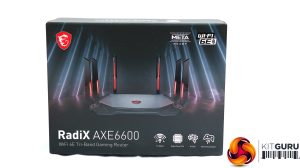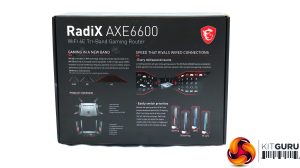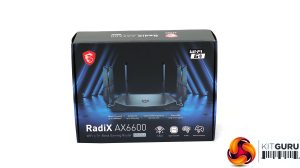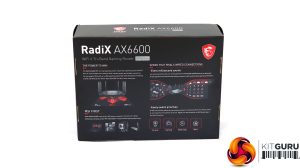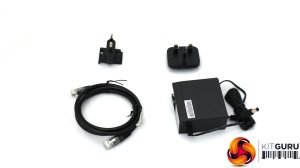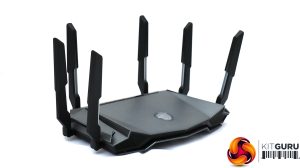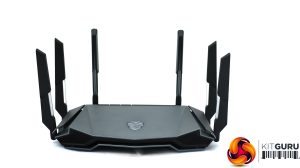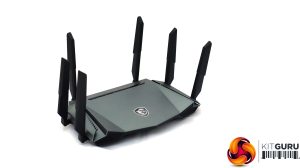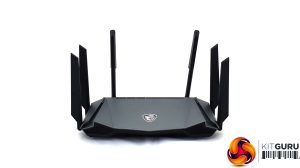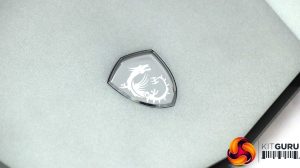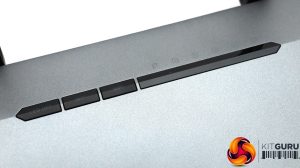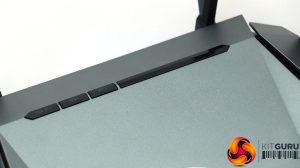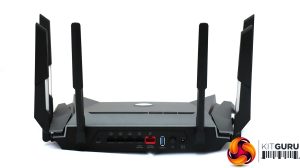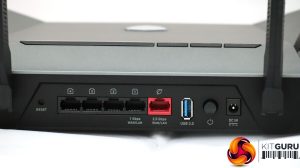The RadiX boxes are quite similar from the front, although the information on the rear is a bit different.
Apart from the router, the contents are the same. This includes a power supply with European and UK plug pin options, and a Cat 5 Ethernet cable, intended for use with the broadband modem.
There is a lot of physical similarity between the AXE6600 (top) and AX6600 (bottom). The two main differences are the lower lip on the AXE6600, and the lighting on its permanently attached antennas. This is coloured to indicate the router mode you choose on the AXE6600.
The MSI logo on the top of the AXE6600 (top images) is actually a button, which lets you quickly change between router modes. On the AX6600 (bottom images), it's just a logo. The buttons and LEDs on the back are identical for both routers. The lights indicate status for the four LAN and single broadband WAN ports. From left to right, the buttons turn the LED lighting off and on, enable or disable the WiFi radios, and call up the WPS automated setup function.
The rear ports on both routers are identical, so we're just showing you the AXE6600 here. On the far left is a reset button, followed by four Gigabit Ethernet LAN ports and the 2.5Gbit Ethernet WAN port. However, as the visible markings show, you can also use LAN Port 1 for the WAN, freeing up the 2.5Gbit for connecting a high-bandwidth networked device such as a NAS drive or uplink to another networking switch.
Next is the USB port, which is labelled 3.0, but is now known as USB 3.2 Gen 1. This delivers a theoretical 5Gbits/sec bandwidth. The USB port can be used for sharing storage but not a printer. Next along is a physical on/off switch and the power connection.
Overall, the physical characteristics of the RadiX AXE6600 and AX6600 are solid but not significantly ahead of the BT Smart Hub, apart from the flexibility of the 2.5Gbits/sec WAN port.
Specification:
- Wireless protocols: MU-MIMO with 802.11b/g/n 2.4GHz, 802.11a/n/ac/ax 5GHz (plus 6GHz for AXE6600)
- Performance: AXE6600 / AX6600 (4,800 + 1,200 + 600 Mbits/sec)
- Antenna Configuration: 6×6 external antennas
- Ports: 4 x Gigabit Ethernet, 1 x 2.5Gigabit Ethernet WAN, 1 x USB USB 3.0
- Modem Support: VDSL/ADSL 2+ or cable
 KitGuru KitGuru.net – Tech News | Hardware News | Hardware Reviews | IOS | Mobile | Gaming | Graphics Cards
KitGuru KitGuru.net – Tech News | Hardware News | Hardware Reviews | IOS | Mobile | Gaming | Graphics Cards


